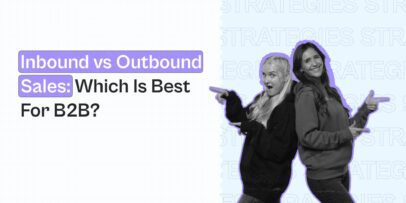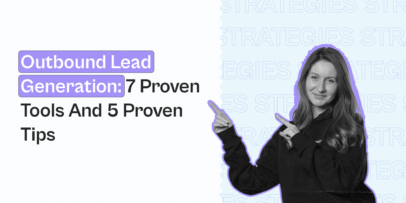LinkedIn Sales Message: How to Stand Out With a Value Proposition
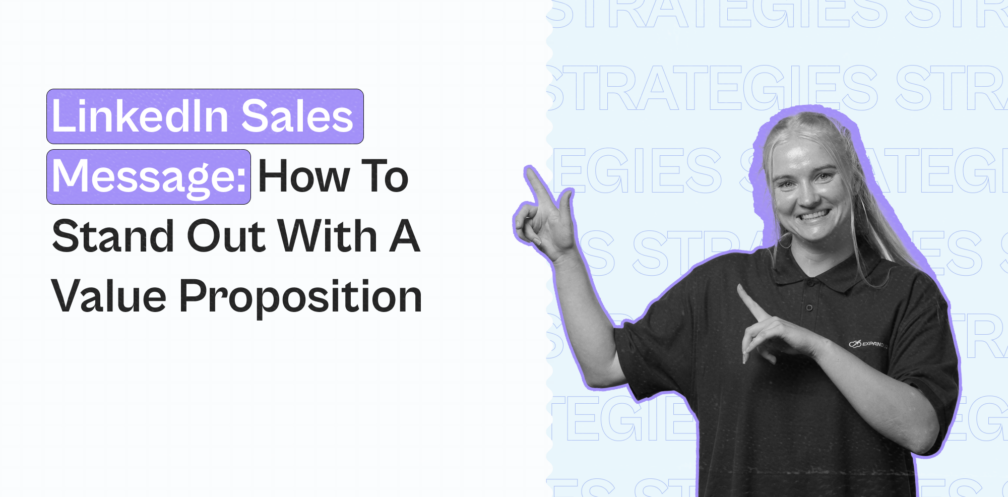
Before you start your next Linkedin outreach campaign, stop for a second and try to answer these questions:
- Who is your potential customer for this campaign?
- Who is your target audience?
- Why would they choose your company/product?
If you can’t answer these questions in seconds, chances are you’re not ready to start the Sales Navigator campaign and use Linkedin messages for sales. I suggest you take a step back and ensure you know who is buying your product/service and why they are buying it.
You may be tempted to go and look for LinkedIn Cold Message Samples, but before you do that you should define your ICP and Buyer Personas and your Value Proposition.

Value Proposition?
Isn’t that the same as Unique Selling Proposition?
Nah.
No worries, we’ll explain everything you need to know.
Unique Selling Proposition vs Value Proposition
Let’s see what the difference is between these two terms.
Unique Selling Proposition (USP) describes what makes you different from your competitors and what makes you stand out.
Unique Value Proposition answers the question: Why should a customer care about that difference? What’s in it for them?
It may be easier to understand on our own example:
Unique Selling Proposition: Expandi is the most powerful and safe omnichannel solution for your outbound challenges on LinkedIn and Email.
Unique Value Proposition can be different and depends on the ICP and type of Linkedin campaign. Some examples:
- You don’t have to be a LinkedIn Rockstar to get 500+ new leads per month using Expandi automation.
- Make successful LinkedIn outreach bypassing limits and restrictions with Expandi.
As you can see, the unique value proposition can be different in each outreach message. It depends on the ICP and BP needs, pains, fears and goals, so it’s important to know your customer before starting your outreach campaign.
What is a value proposition?
Your company’s value proposition clearly articulates why someone would want to buy from your company instead of a competitor. It communicates the biggest benefit that customers receive by giving you their business.
The two most common practices for creating a value proposition are Value Proposition Canvas (VPC) and Jobs-To-Be-Done (JTBD). You can use them simultaneously and see what works best for you. We’ll explain how they work.
Value Proposition Canvas (VPC)
The value proposition canvas helps you ensure that your product is positioned around the things that matter the most – your customer’s needs and values.
VPC helps you determine what your product should do to help your customers, how you should brand it, how much to price it, and so on.
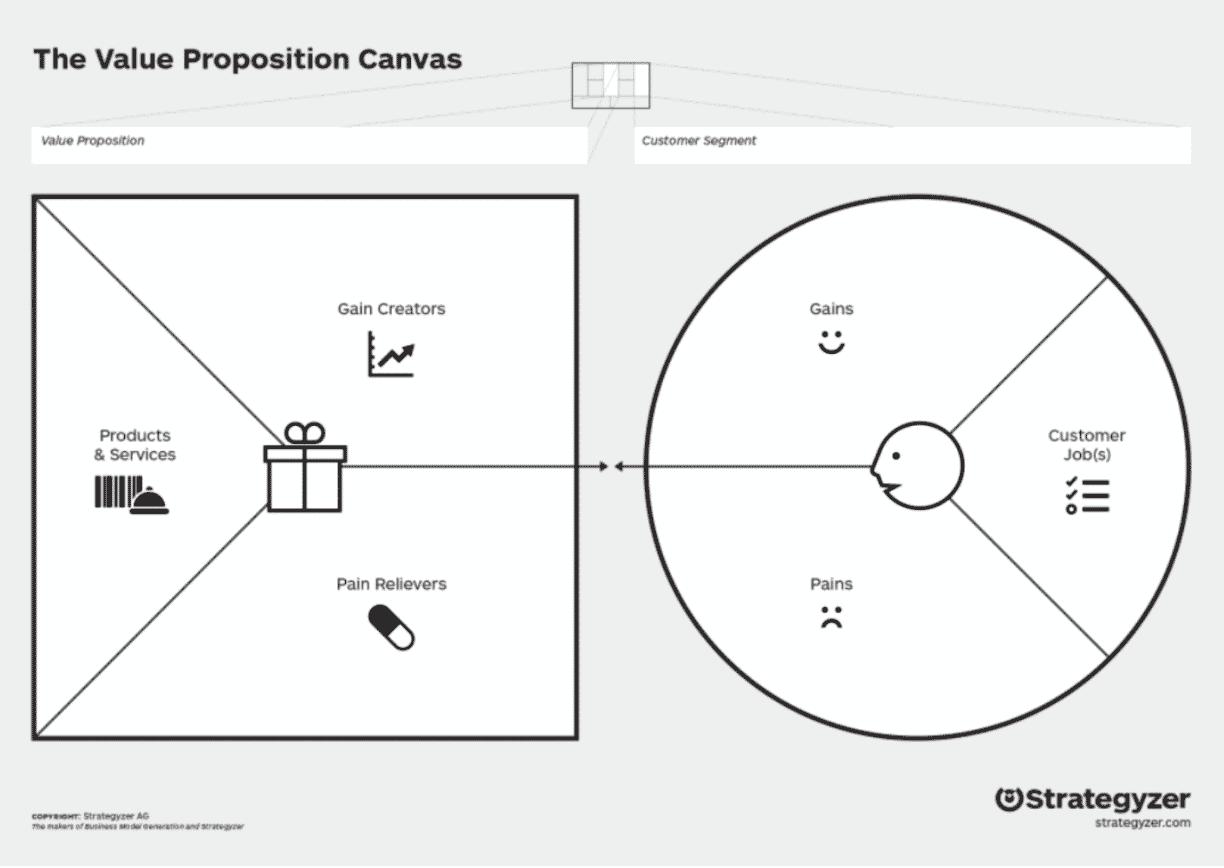
Before completing your VPC you need to fill in Customer Canvas and Product Canvas, as you can see below.
Evernote example:

Jobs To Be Done (JTBD)
Jobs to be done describe tasks your customer tries to solve in their daily life or at work. It can be anything from simple tasks (packing your kids’ lunch for school) to solving complex issues and problems and satisfying their needs.
The following perspective can help: when customers buy a certain product, it’s like “hiring” that product to do the task instead of them or to help them do the job.
Types of jobs
These are the most common types of jobs:
- Functional jobs – solving a specific problem or completing a task
- Social jobs – gaining social status and power
- Emotional jobs – seeking a specific feeling, such as happiness or security
- Supporting jobs – other related tasks
How to create JTBD Statement
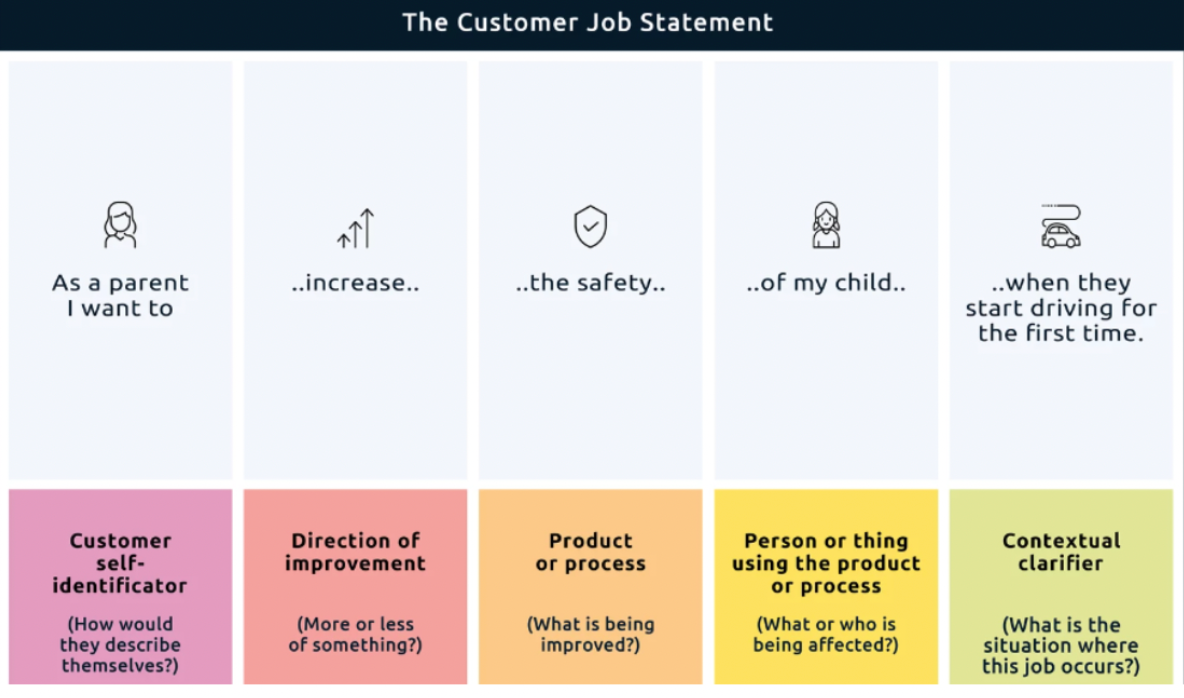
How to create your value proposition?
You’ll now learn how to write a value proposition in five simple steps.
1. Research
- Get to know your customers
The first step is to reach out to your customers and potential customers. Some of the questions you can ask during a customer interview:- How did you find our solution?
- What made you opt for our solution?
- What are your biggest challenges?
- In what way has our product or service changed your life?
- What do you value the most when it comes to our product?
- Do a competitor research
You should conduct a competitive analysis to learn about your competitors and learn more about them. Identify your main competitors and then analyze their offers. Are there any areas where they are falling short? Is there anything that could be improved?You should also analyze their online presence, social media accounts, how they communicate with their customers, etc. Don’t forget to check reviews on customer review websites that can provide you with important insights. - Study relevant reports, publications, and interviews
If you don’t have a lot of customer data, make sure to find reports from relevant resources.
2. Define your ideal customer
To craft a compelling value proposition and reach the right target audience, you need to be aware of what are your customer’s biggest pain points. Creating your ideal customer profile and buyer persona can help you understand better.
ICP is a description of an ideal company with all the characteristics of your perfect customer. It helps you with the Linkedin sales navigator when it comes to narrowing down your Linkedin outreach campaign and ensuring you message only companies that fit into that profile.
A buyer persona describes an individual within that ideal company responsible for decision-making. We’re talking about CEOs, managers, directors, and other people who you can contact through Linkedin outreach campaigns by sending them a connection request. You want to understand what their goals are, their fears, what keeps them up at night, and what motivates them.
3. Define the problem you’re solving
Your value proposition should focus on the one most important or biggest problem you can solve for your customers. It should be very specific and straightforward because that’s how people remember you.
4. Define your unique method of solving the problem
Once you’ve identified the problem, you should show your customer your unique way of solving it and what makes your solution different/better. Maybe it’s a special method you developed through years of practice, maybe it’s a different technology or a combination of both. It should be clear what makes you the best option on the market for your ideal customer.
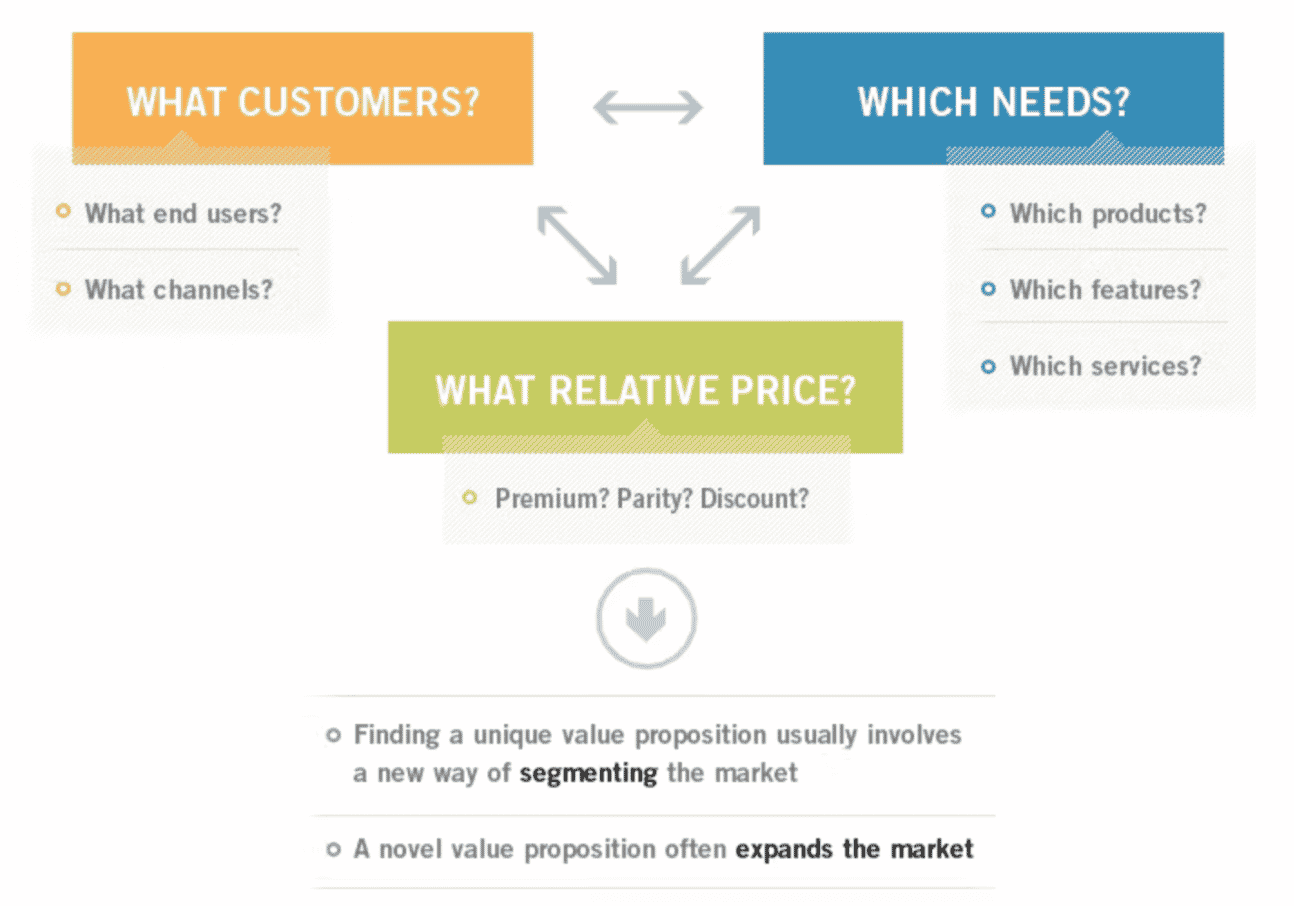
5. Create your hypothesis
The last step is to formulate your hypothesis. It can look like this:
Buyer Persona: Sales Manager
Problem: Many sales managers struggle with Linkedin outreach messages because they use the wrong automation tools that impose restrictions.
Our Solution & Value proposition: Expandi is a cloud-based solution that is safe for Linkedin outreach automation. It allows you to avoid restrictions and get predictable leads without extra work.
Results customers will get: Getting qualified leads constantly and saving a lot of time in the lead generation process.
How to use VP in Linkedin outreach campaigns
There are a few reasons why it can be hard to get the value proposition right in Linkedin messages for sales:
- People get turned off if the initial message after the connection request sounds like a sales pitch
- People lose interest if the message isn’t clear and they don’t get what you want from them
- Everyone talks about the importance of cold message personalization, but some people find a personalized message from an unknown Linkedin profile a bit creepy
So, what does a good Linkedin prospecting message looks like?
Before you look for a Linkedin sales message template, I need you to understand something.
Best Linkedin messages for sales aren’t about you or about your company. Successful LinkedIn sales messages are all about your prospect and their company. They are the main character and our product or service supports them in achieving their goals.
Here is what to include in your outreach message:
- The reason why you reached out to them exactly, and not someone else.
- The clear answer to the question: What can you do for them? What can you help them with?
- The benefit of starting a business relationship or cooperating with you. In other words, what’s in it for them.
- The example of how other people and/or companies benefited from cooperation with you. Social proof works like a charm!
- Make sure to sound like a person looking for a real connection, not a salesperson trying to close a deal.
Best LinkedIn Connection Message Templates
Here are Linkedin message templates for three common situations.
Linkedin message template #1: Lead generation campaign
“Hey {first_name}, I have an idea I can explain in 10 minutes to get {Company name} its next 100 best customers. I recently used this idea to help our client {SaaS Company/Competitor} almost triple their monthly run rate. {first_name}, let’s schedule a quick call so you can learn more and see whether it works for you.”
Why it works:
- Enticing offer: People receive too many Linkedin cold messages and your offer needs to stand out. The best LinkedIn connection messages for sales are very specific and give your prospects a reason to respond. Always mention what’s in it for them.
- Personal feel: The goal is to make the message friendly and non too salesy. Adding their company name or a name of a mutual connection shows that you have a common ground.
- Social proof: Mentioning your previous customer and the results you delivered to them is a powerful social proof that makes the end result seem more obtainable.
Results:
57% connection rate
23% response rate
15% booked calls
Linkedin message template #2: Invitation to Join the group
“Hey {first_name}! Wanted to introduce myself and invite you to the LinkedIn Outreach Family. We are 1,200+ top founders and marketers. Mark Zuckerberg voted us one of his favorite groups. Want in?”

Why it works:
- Relevant content: You’re not inviting them to some random Facebook group. Linkedin groups are a place where they can find relevant content and network with other Linkedin group members, and also discover the Linkedin event.
- Social proof: Mentioning industry leaders and other members from the same industry who are in the same Linkedin group will make them want to join your Linkedin group.
Results
42% connection rate
52% response rate
20% joinings
Linkedin message template #3: Hiring campaign
“Thanks for accepting {first_name}!
I came across your Linkedin profile and noticed you work as an SDR. Are you interested in a new opportunity?
I’m building out our Sales Team at Expandi.io – and we’re looking for a Sales Development Representative. Let me know if you’re interested in learning more about the role?
We’ve been on an insane journey bootstrapping to $6M ARR in just 18 months exclusively inbound. Over 2024 our goal is to grow to $10M in ARR and our outbound sales team will be a big driver to help us achieve that!
Look forward to hearing from you”
Why it works:
- Personalization: A message copy that follows your Linkedin connection request shows that we researched their background, their Linkedin profile and previous job experience.
- The reason why we reached out: Best recruiting messages on LinkedIn are clear and put the reason for contacting at the beginning of the message.
- The benefit of starting working with us: We showed that Expandi is fast growing and has a great perspective for carrier building.
- Clear offer in the question
Results:
74% connection rate
74,2% response rate
3 hiring SDRs
Final tip
Now you have all the tools to create your value proposition and craft winning Linkedin messages. It’s time for action!
Feel free to copy our Linkedin message templates for sales or use them as inspiration to come up with your own.
Remember that it’s always important to customize your message for each buyer persona so they feel you’re speaking directly to them.
You’ve made it all the way down here, take the final step

